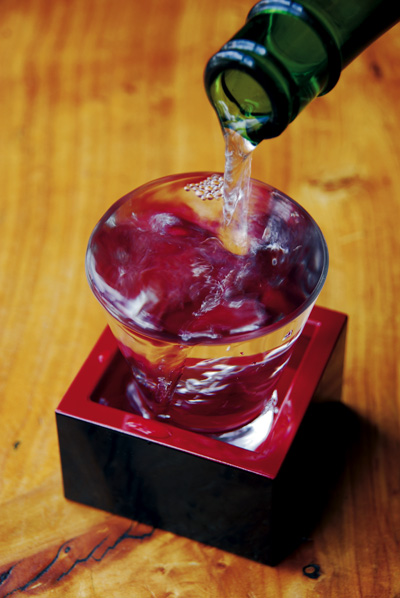Sake
 The word sake just means “alcohol”. Japanese people call what we refer to as sake, “Nihon-shu (Japanese wine/liquor)”. The word “sake” will be used here for convenience, though.Sake’s beginnings in Japan are not well-documented because they are ancient, but they derive from China. However, as with many borrowings from China, sake went on to become something quintessentially Japanese. The earliest mention of a Chinese liquor similar to sake is in the8th century B.C.
The word sake just means “alcohol”. Japanese people call what we refer to as sake, “Nihon-shu (Japanese wine/liquor)”. The word “sake” will be used here for convenience, though.Sake’s beginnings in Japan are not well-documented because they are ancient, but they derive from China. However, as with many borrowings from China, sake went on to become something quintessentially Japanese. The earliest mention of a Chinese liquor similar to sake is in the8th century B.C.
As with any group of people intelligent enough to create alcohol, both the Chinese and the Japanese associated their liquor with the gods, and with royalty. The Chinese made their gods offerings and, even today, you will find sake barrels prominently displayed in many Japanese shrines. (So far as other cultures go, the Sumerians – one of the oldest recorded civilizations – had a beer god, and the kind of beer which we drink today was invented by a legendary Belgianking, Gambrinus).
Of course, in its latter-day western infamy, alcohol became the “demon drink”, but not in Japan. There the word onikoroshi (demon killer) is merely used to refer to sake that is so bad it would kill a demon; (some clever dick went on to use this word for a brand of sake – so good that it would kill a demon ! In the sense, of died and gone to heaven – or the other place – we suppose).
By the 7th century A.D. improved Chinese brewing techniques resulted in such increased popularity for sake that a professional brewing organization was established at the Imperial Palace in Kyoto. With Japan’s opening to the West in the 19th century, laws were promulgated which allowed anyone to construct and operate their own sake breweries. Almost overnight 30,000 of them sprang up.Predictably, the government saw this as an excellent tax revenue base and, after a number of years, the amount had dwindled to 8,000.Sake, as we know it today, is both a staple and a sophisticated drink within Japan. There are many different kinds. Let’s look at some of the more well-known ones.
Ginjo-Shu
A premium grade. Ginjo is to regular sake what single malt is to regular scotch. With sake rice, the more the exterior of each grain is milled/polished away prior to brewing, the more elegant and pure the flavour of the sake brewed will then be. With Ginjo, each rice grain has been polished away by at least 40 – 50%. Ginjo should be enjoyed either at room temperature, or only slightly chilled. Excessive heating or chilling will destroy the all-important taste of this sake.
Daiginjo-shu
A subclass of ginjo-shu, and prized above all others as the acme of Japanese sake. Uses the most highly milled rice of any sake (polished away by at least 60% or over), and involves the most precise and labour-intensive methods. Generally light, complex and fragrant. Same applies.
Junmai-shu
Sake made only from white rice, rice koji (cultured rice, which has formed a mold, for the fermentation process – without this, there is no sake), and water. It tends to have a mellow bouquet and a rich, smooth flavour.
Honjozo-shu
Sake made using water, the koji mold, a small amount of pure, distilled “brewer’s alcohol”, and white rice which has been milled so that 70% or less of the grain remains. Light, mild, an unobtrusive bouquet, and (most importantly of all) easy to drink.
Nama
The Japanese word nama, in its most basic translation, means raw or uncooked. It is used in Japan in several different contexts, for example: draft beer is known as nama beer, and nama sake refers to sake which has been left unpasteurized. Normally sake is pasteurized twice; nama sake not at all. This imparts a fresher, livelier flavour to the beverage, and makes it more aromatic. Serve it chilled, and finish it all the evening you start it. This type of unfiltered/unpasteurized sake does not last long otherwise. Good with
either beef or tempura.

